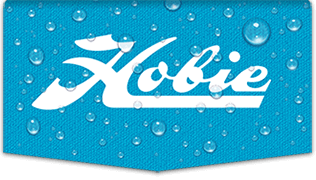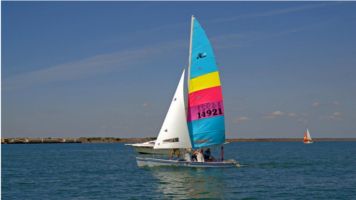PFD, NOR, SI, DSQ, IMO, USCG, CE, Newtons, SFPD and everything you wanted to know about regulations regarding life jackets.John and Suzie were racing their Hobie 16 in the US SAILING Multi-hull championship in San Francisco wearing a Hobie PFD like this
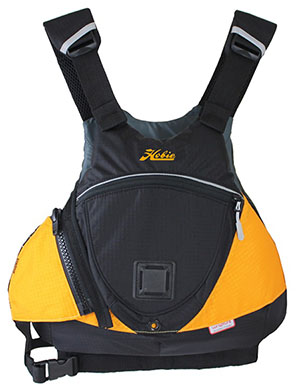
They had a great day, won a dustable pickle dish for taking 3rd place and then went out on their Hobie SUPs for a victory paddle around Pier 39. They had a great Hobie Day.
Dick and Jane sailed in same regatta wearing a Zhik PFD like this
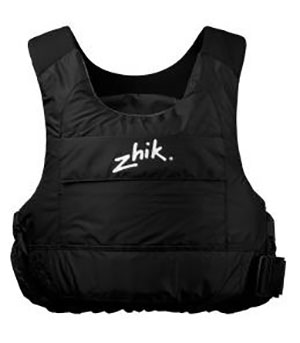
They were protested and disqualified. Sailing back to the dock, they were stopped by the US Coast Guard for a safety inspection and received a citation. Later, to wind down, they took their SUP out for a quick paddle. They were pulled over by the San Francisco Police Department and given a ticket. What gives?
First, let’s understand the terms and who the players are. If you want to cut to the chase, a short synopsis is at the end of this memo.
PFD- Personal Flotation Device; Life Jacket
NOR & SI; DSQ- Notice of Race; Sailing Instructions; Disqualification. The first two are documents produced by an Organizing Authority and Race Committee for a race you are going to enter. They set the terms and conditions of a race and describe how the race is going to be run. DSQ is a disqualification for breaking one of the rules.
IMO- International Maritime Organization is the United Nations specialized agency with responsibility for the safety and security of shipping and the prevention of marine pollution by ships. This is the group that set standards for all kinds of marine safety gear.
USCG- US Coast Guard. This is the US agency responsible for enforcement of US law on the water. They are also tasked to inspect vessels for compliance in carrying proper safety gear.
CE- The CE mark is a mandatory conformity marking for certain products sold within the European Economic Area.
Newtons- (not the fig type) Newtons are a measurement unit of derived units of force. In this case the force is flotation. So more newtons=more flotation.
SFPD- San Francisco Police Department has a on the water division that patrols the waterfront.
What Gives: The full explanationDick and Jane didn’t fully understand the requirements and got hammered. Let’s start with the race. Notices of Race and Sailing Instructions usually have one of three possible requirements in the ‘Safety’ section. In the Notice of Race, this information is usually in Section 1; Sailing Instructions, this is usually in Section 18. The following phrases are common:
1- Competitors shall wear a U.S. Coast Guard (USCG) approved personal flotation device (PFD) while on the water, other than for brief periods while adding or removing clothing. No modifications of the PFD are permitted. Competitors from outside the US may wear a PFD approved by their nation’s certification authority to the extent permitted by international treaty. The PFD must be worn outside of all clothing except that a thin shirt may be worn over the PFD to prevent snagging. Failure to comply with this rule may result in disqualification as determined by the protest committee. or;
2- All competitors shall wear adequate personal flotation devices whilst racing (neither a wet nor a dry suit constitutes an adequate personal flotation device for these purposes). or;
3- All competitors in this regatta shall wear, while on the water, other than for brief periods while adding or removing clothing, a PFD. (This changes RRS 40 and the preamble to RRS Part 4).
So, Dick and Jane were under SI #1 above and had to wear a USCG approved PFD. No USCG=DSQ. Bummer.
Had they been sailing under SI#2, would they have done better? The protest committee will be forced to determine what is ‘adequate personal flotation’. The USCG standard (Hobie vest) is 70 Newtons of flotation or about 15.5 lbs of flotation; the CE standard (Zhik vest) is 50 newtons or about 11.2 lbs of flotation.
The CE standard for a 50 newton PFD says:
This level is intended for use by those who are competent swimmers and who are near to bank, shore, or who have help and a means of rescue close at hand. These garments have minimal bulk, but they are of limited use in disturbed water, and cannot be expected to keep the user safe for a long period of time. They do not have sufficient buoyancy to protect people who are unable to help themselves. They require active participation by the user. Standards applicable to this level; EN 393 or ISO 12402 – 5. Hmmm, the middle of San Francisco bay with a 4 knot ebb tide in 25 knots of wind probably would be too much for a 50 newton CE vest, so Dick and Jane might get the DSQ. I have tested a Zhik in 20kts of wind and 4’ chop. It was a struggle I don’t wish to repeat. It was hard to keep on my back and to keep my face out of the water.
For #3, Dick and Jane would be OK as far as the protest committee was concerned, but not the USCG or the SFPD.
In addition, Dick and Jane need to carry a USCG Type 3 PFD on board their Hobie 16 for each person; A CE 50 will not do. They don’t have to wear it, but they must have it. In addition, they need to carry a throwable device like this.
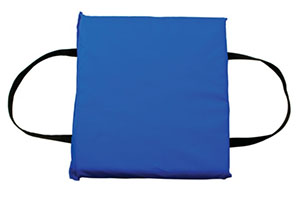
Dick and Jane had a horrible day.
CUT TO THE CHASE- All boats must carry a USCG approved PFD on board for each person on board.
- All boats over 16’ must carry a throwable USCG Type IV device on board.
- Children must wear a PFD (state requirements apply here and are different for each state. Rule of thumb is under 13 must wear a PFD in most states.)
- A SUP is a boat and must carry a PFD on board.
- A kayak/canoe is a boat and must carry a PFD on board for each person in the boat.
- Most inflatable PFDs must be worn in order to count as a PFD.
- If in a sailboat race, the Notice of Race and Sailing Instructions may specify what must be worn, but the USCG requirements still apply.
The answer to meet all the racing, USCG and local requirements:
Wear a Hobie PFD.About the authorKirk Brown is a US SAILING and International Sailing Federation certified umpire and judge. He is a member of the US SAILING Safety at Sea Committee and is a member of the US Marine Safety Association. Associates in his group are certified by the AMSEA as trainers, are moderators for the US SAILING Safety at Sea Conferences and USCG 100 ton license programs. Kirk was an umpire for the 32nd America’s Cup in Valencia Spain and was chairman of the US SAILING Umpire Committee, served on the US SAILING Appeals Committee and was a member of the ISAF International Umpire Sub Committee. Kirk is the factory representative for Stohlquist Life Jackets.




